In the world of Agile, the ability to adapt and evolve based on real-time user feedback is a cornerstone of success. Yet, many organizations miss the mark when it comes to empowering their teams to make meaningful changes to requirements based on this feedback. In this post, we’ll explore why this is a crucial aspect of Agile that often gets overlooked, and how you can ensure your teams are truly Agile by enabling them to close feedback loops and adjust requirements as needed.
The Missing Piece in Agile Organizations
One of the most critical questions you should ask in your Agile organization is: Are teams empowered to change requirements based on user feedback? This goes beyond simply gathering feedback, it’s about whether your teams can actually implement changes to the product requirements based on what they learn.
Gathering Feedback is Not Enough
Collecting user feedback is a valuable practice, but it’s only the first step. The real question is whether your teams can take that feedback and action it. For instance, if a significant part of your product turns out to be no longer viable or aligned with business needs, can your team pivot and make the necessary changes to the requirements?
This ability to adapt is often hindered by rigid structures, such as:
Locked-in requirements: When requirements are set in stone, it becomes impossible to adjust based on user insights.
Complex change request systems: Expensive and convoluted processes can deter teams from making changes.
Lack of empowerment: Teams may not have the authority or trust to make changes, even when they know it’s the right thing to do.
Real-World Challenges
Let’s consider a scenario that often occurs in Agile environments, especially in business systems or B2B contexts. When you ask users what they need, their first response typically revolves around immediate needs, problems they’re currently facing. These are often issues that should have already been addressed in your product. However, by the time these needs are met, they may no longer be relevant or as urgent due to the delay in delivery.
As teams work on a product with a set delivery cadence, say every three weeks, businesses often project what they’ll need in the future. They might be preparing for a significant decision three months down the line, which could drastically change what the product needs to support.
Adapting to Market Changes
For example, imagine your users are anticipating a major business choice that could go one of two ways (let’s call them Option A and Option B). Depending on which option is chosen, the product requirements will shift. As a team, you might start delivering features that align with both options, but as soon as the decision is made, only one set of features will remain relevant.
In an Agile organization, it’s crucial to ask:
Can your team quickly discard or de-prioritize features that are no longer needed?
How efficiently can you close the feedback loop to remove unnecessary requirements?
If your teams can’t adapt in this way, you’re likely not fully Agile. True agility requires the flexibility to not just gather feedback but to act on it, often in real-time.
The Barriers to Change: Contracts and Complexity
One of the biggest barriers to adapting requirements based on user feedback is the rigidity of contracts and the complexity of change request systems. These can create a “locked-in” effect, where teams are unable to make necessary changes without jumping through hoops.
Rigid Contracts
Contracts that don’t account for the need to change based on user feedback are a significant obstacle. Agile organizations need to ensure that contracts are flexible enough to accommodate changes. This might mean building in clauses that allow for adjustments or working with stakeholders to agree on more adaptive approaches.
Complex Change Request Systems
Change request systems that are cumbersome or expensive to follow can also dissuade teams from making necessary adjustments. These systems, often put in place to avoid chaos, can ironically create the very rigidity that stifles innovation and responsiveness.
The solution? Streamlining these processes and fostering a culture of trust and empowerment where teams are trusted to make the right decisions for the product and the business.
The U.S. Department of Defense’s Litmus Test: Detecting Agile BS
If you’re wondering how Agile your organization really is, consider using the U.S. Department of Defense’s “Detecting Agile BS” guide. It offers a six-question litmus test that can help you assess your true agility.
The Six Questions
Are teams empowered to change requirements based on user feedback?
Is user feedback gathered frequently and systematically?
Can teams pivot quickly based on new insights?
Is the change process simple and streamlined?
Are contracts flexible and adaptive to change?
Is there a culture of trust that allows teams to make decisions autonomously?
If your answer to any of these questions is “no,” then your organization might not be as Agile as you think. While this litmus test is not about pointing fingers or labeling organizations as “non-Agile,” it is a valuable tool for self-reflection.
Reflect and Improve
As a Scrum Trainer, I don’t enter a team and immediately start pointing out where they fall short. Instead, I use these questions to help teams reflect on their current practices and identify areas for improvement. This approach fosters a continuous improvement mindset, which is at the heart of Agile.
Closing the Loop: Empowering Teams for True Agility
The ability to change requirements based on user feedback is not just a nice-to-have, it’s essential for any organization that wants to be truly Agile. To make this a reality, you need to:
Empower teams to make changes without unnecessary red tape.
Simplify processes to make change easy and cost-effective.
Build flexibility into contracts to allow for adaptation.
Foster a culture of trust where teams are trusted to make the right decisions.
Real-World Example: Adapting to User Feedback in Action
In one of my recent engagements, a team was working on a B2B system with a three-week delivery cadence. Midway through a project, significant user feedback indicated that a substantial part of the product was no longer aligned with the business’s future needs. Instead of being locked into the original requirements, the team was empowered to pivot, reprioritize the backlog, and focus on delivering the features that mattered most.
This kind of flexibility not only saved the business time and money but also ensured that the product remained relevant and valuable to its users.
Takeaway
Agility isn’t just about following a process, it’s about being responsive to change. By empowering your teams to change requirements based on user feedback, you ensure that your product remains aligned with market needs, ultimately leading to greater success. 🔄 Remember: Agile is a journey, not a destination. Keep asking the tough questions, keep reflecting, and keep improving. Your users, and your bottom line, will thank you.


























